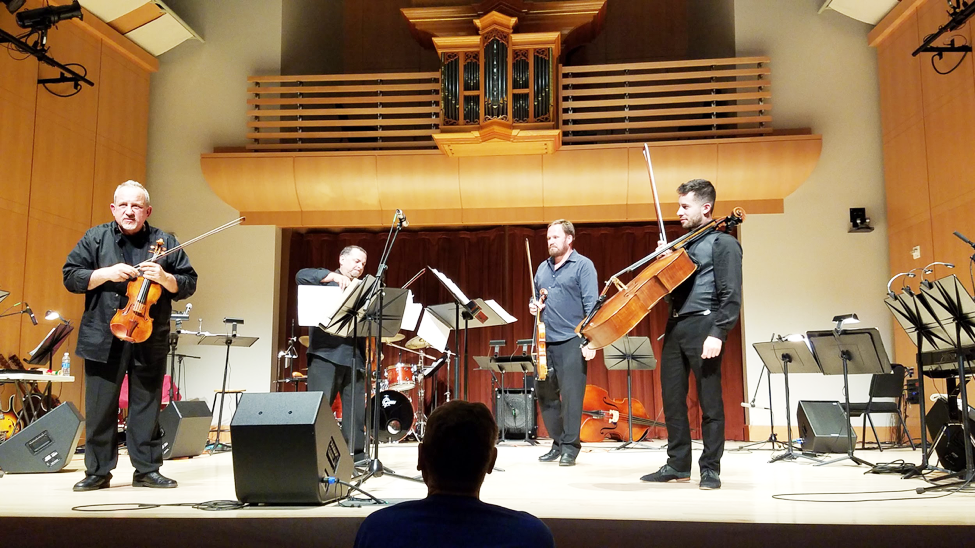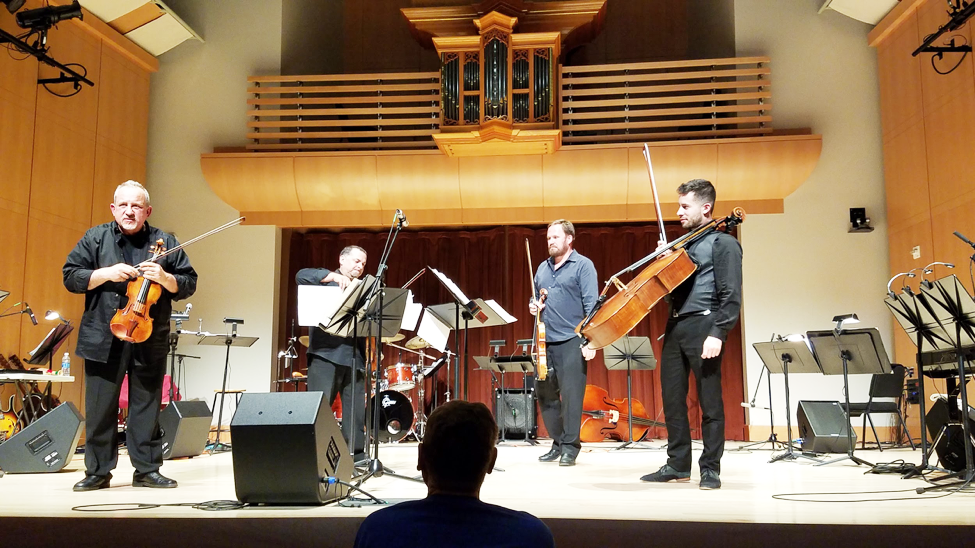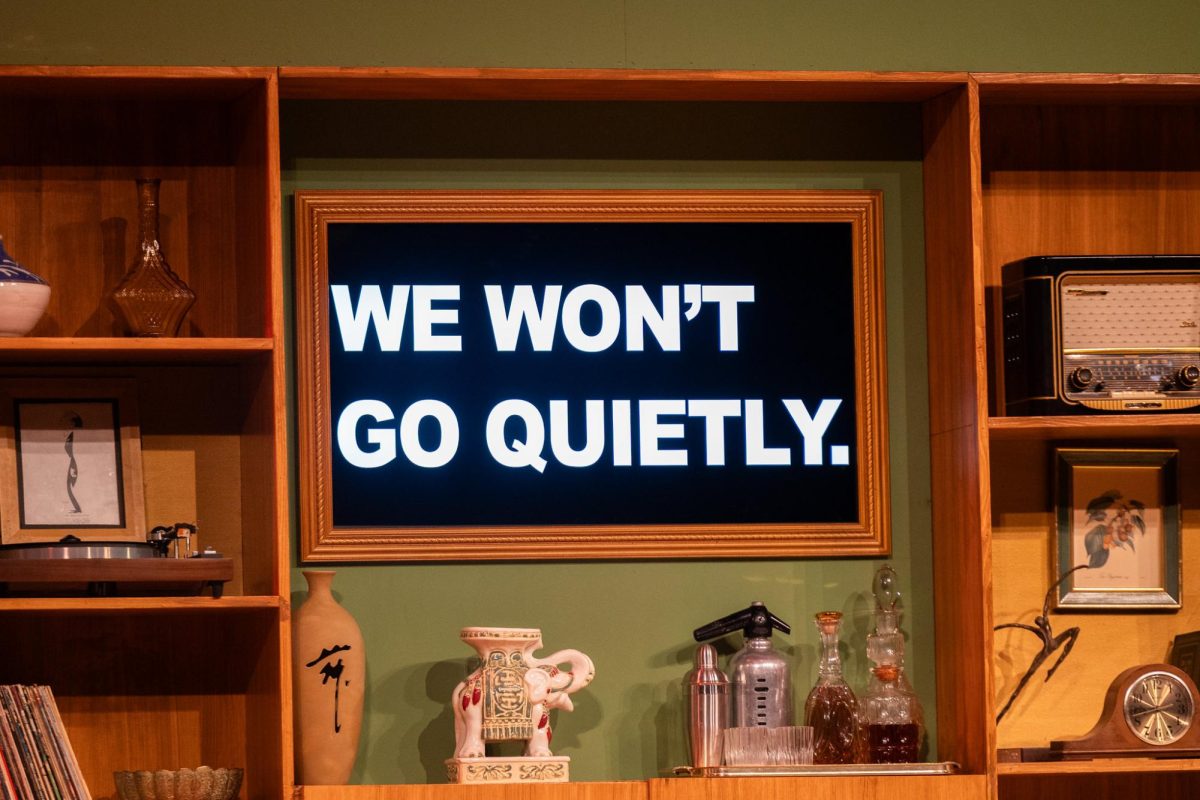STAR // Alexis Austin
Quartet San Francisco features four Sonoma State alumni who met at the school 40 years ago.
On Saturday at Schroeder Hall, the stage was scattered with an array of instruments; the grand piano at the center. An eclectic performance was inevitable.
The recital was composed, arranged and performed by alumni of Sonoma State University. The first groups to perform were announced as having been here in “the 70s.” Robert Gilmore, a composer, flutist and vocal performer began the recital along side Rita Thies for a formal yet melodic and expressive flute duet, titled “Elsewhere” accompanied by pianist and composer Jan Ferrin.
Ferrin began studying classical technique at the age of five and was considered a professional pianist by the time he was twelve. He received his B.A. in music with distinction from Sonoma State in 1975. After a busy career in the music and film industry, he was back to share this piece as well as four others, “Futureshock,” “Awaken,” “Believing (But being Something Else)” and “Looking Glass.” This piece was performed towards the end of the recital with the largest group that featured vocals from himself and Gilmore.
The following piece, “Three Hymns,” a light and bright selection, was arranged by Thies and written by Charlie Stevens, who listened from the audience.
Gilmore composed seven of the pieces performed. These included “Undercurrent,” performed by Moira Little on the oboe and English horn and accompanied by Ferrin. Little stretched the sounds of the oboe from the highest to lowest notes and quickly changed back and forth to the English horn. The song seemed to be a conversation between the soprano tones of the oboe and the rich and robust tone of the English horn. This piece was truly beautiful; one could imagine a romantic film, as a certain melody was comfortingly revisited throughout.
Four particular alumni performers, Jeremy Cohen (violin), Anthony Blea (violin), Chad Kaltinger (viola), and Andres Vera (cello), met each other at Sonoma State 40 years ago. 24 years later, they teamed up as the “Quartet San Francisco” and have been recording and performing together since, earning Grammy nominations for their last three CD releases.
Cohen, the founder of the group, looks back on his time at Sonoma State as, “the most important and formative years. Although after my time at Sonoma State I continued studies in Brooklyn, NYC, my time here I spent learning vital music history and theory.”
He also remembers Anne Crowden as one of the most influential teachers he had the opportunity to study with. Coincidentally, the third piece the group performed written by Cohen, was dedicated Crowden, titled “Crowdambo.”
“Because there are not enough mambos written for string quartet in the literature,” Cohen joked.
This dynamic and unusual composition was a masterful blend of excitement and charm.
Included in the Quartet’s repertoire as well were Gilmore’s “Lord Chumley’s Romp” and “Distance.” Cohen clarified that Lord Chumley was “Robert’s huge, striking cat known for his very unusual personality.”
The piece was actually first performed at a chamber music recital at Sonoma State in 1978. Chumley’s image was preserved well, as the music performed could have been interpreted as an adventurous day in the life of the feline, cartoonish and charismatic, to say the least.
“Distance” was more than music. It sounded like a movie. Appropriate because it was originally developed for a Film Orchestration class at UCLA.
According to Gilmore, “’Distance’ was originally written to convey feelings of love and longing, in the context of a long distance relationship, which later led to marriage.”
The four stings conveyed this film-like sequence beautifully and naturally as they brought unison, harmony and dynamics to a new level or prestige.
Needless to say, Sonoma State’s talented music alumni have gone far. However, distance and time should no longer be an obstacle from this shared community and foundation where the music department has only further expanded and proves to extend welcome to music from all around the world, including musicians just touching back in with a place near and dear.




































